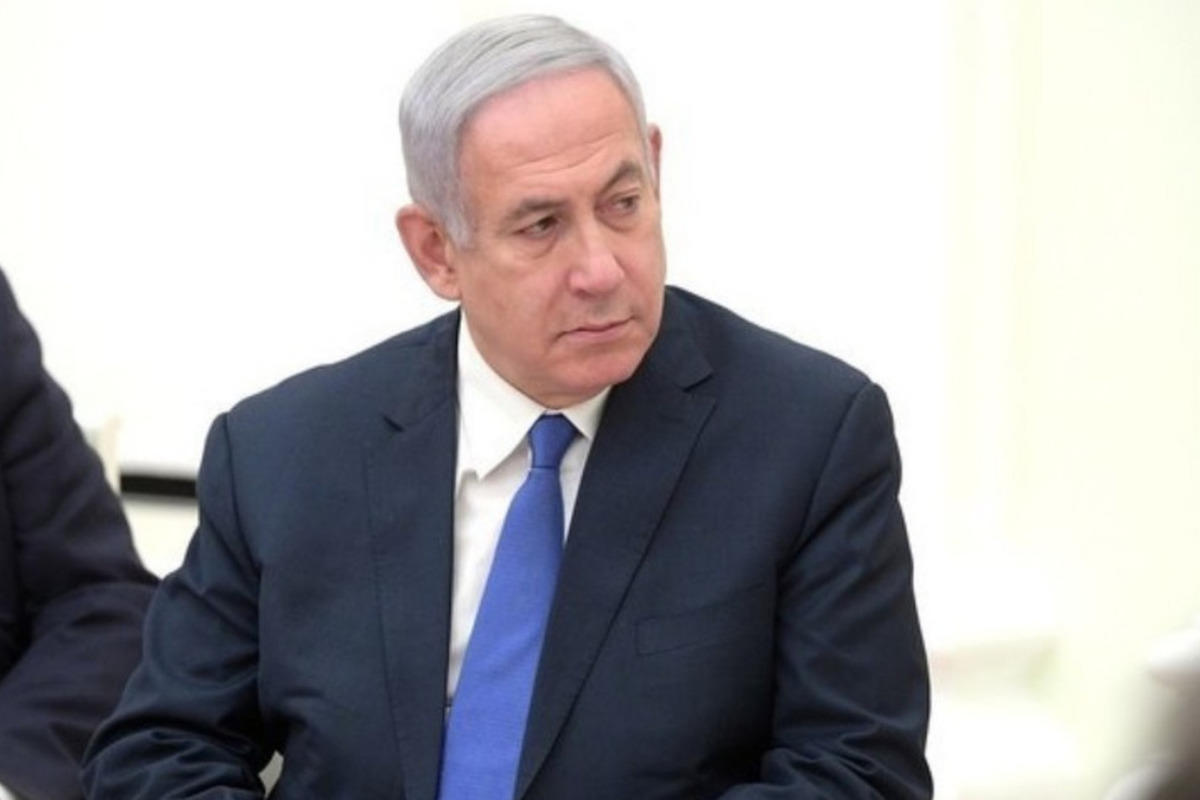Netanyahu called strict ceasefire conditions in the Gaza Strip
[ad_1]

Israeli Prime Minister Benjamin Netanyahu said he would not accept any ceasefire agreement that requires the release of thousands of Palestinian prisoners or the withdrawal of Israeli troops from Gaza, while Hamas leader Ismail Haniyeh said he was willing to travel to Cairo to discuss the proposals.
According to The Guardian, Isamil Haniyeh said that the goal of the group he leads remains to end the Israeli military offensive in Gaza and ensure the complete withdrawal of Israeli troops from the territory of the Palestinian enclave.
Although it was known that Israel would have difficulty accepting such terms, Egypt, Qatar and the United States hoped to persuade both sides of the conflict to agree to a ceasefire of at least a month, which would provide a chance for the release of almost all the hostages.
The proposal, called a framework proposal, was hammered out by Egypt, Qatar, the United States and Israel on Sunday during talks in Paris. The location of the talks meant that Hamas representatives could not attend.
Netanyahu threw cold water on any deal that would require Israeli soldiers to leave Gaza forever without a clear military victory, The Guardian notes. The prime minister said the Gaza war is not “another round” of confrontation with Hamas and he will not end it without achieving Israel’s goals.
Regarding reports of a potential hostage deal, the Israeli Prime Minister said the Israel Defense Forces (IDF) would not leave Gaza, and he said he had no intention of releasing thousands of “terrorists.”
Leaks suggest the first stage of the proposed ceasefire involves the release of around 35 hostages in exchange for a six-week pause in hostilities. This group will include civilian women, elderly men and hostages who are sick or injured. In exchange, Israel would release hundreds of Palestinians from its prisons.
The second phase will focus on male and female soldiers, while the third phase will exclusively involve the release of the bodies of the dead hostages.
Netanyahu faces a deep split in his cabinet and knows that these proposals could lead to the fall of his government, The Guardian emphasizes. Speaking during a visit to an Israeli settlement in the West Bank on Tuesday, the prime minister said: “We will not compromise for anything less than total victory.”
He promised that Israel would achieve all its goals, adding: “That means eliminating Hamas, returning all our hostages and ensuring that Gaza no longer poses a threat to Israel.” Until then, no Palestinian prisoners will be released from Israeli prisons, Netanyahu claims.
Senior Hamas official Sami Abu Zuhri said Netanyahu’s comments “prove that he is not interested in the success of the Paris meeting and does not care about lives [израильских] prisoners.”
Israeli National Security Minister Itamar Ben-Gvir warned that a “sloppy” deal would lead to the dissolution of the coalition.
Meanwhile, Haniyeh said: “Our response to this proposal will be based on the fact that the priority is to end the aggression against Gaza and the withdrawal of occupying forces from the strip. The movement is open to the discussion of any serious and practical initiatives or ideas, provided that they lead to a comprehensive cessation of aggression, the provision of housing and reconstruction processes, the lifting of the siege and the completion of a serious prisoner exchange process.”
The exact proportions of the number of released prisoners for each category of hostage have not yet been agreed upon.
Antony Blinken, the US secretary of state, said on Monday evening that “very important, productive work has been done. And there is some real hope for the future.”
He added: “Hamas will have to make its own decisions. I can just tell you that there is a good, strong agreement between the countries involved and that this is a good, strong proposal.”
David Cameron, Britain’s foreign secretary, said any deal would require the removal of Hamas’ military leadership from Gaza.
Meanwhile, the Israeli army said Tuesday it was releasing water into Gaza’s tunnels in an attempt to destroy an extensive underground network used by Hamas to launch attacks on Israel. According to a study conducted by the US military academy West Point, at the start of the war in October, there were 1,300 tunnels in Gaza stretching more than 500 km (310 miles), The Guardian recalls.
The military has vowed to destroy underground communications following the October 7 Hamas attack. In December, some Israeli media reported that the military was inclined to flood the tunnels with seawater pumped from the Mediterranean Sea. But experts have warned that the option is dangerous and poses a huge risk to Gaza’s besieged civilian population.
“This will cause serious damage to Gaza’s already fragile water and sanitation infrastructure,” then-UN humanitarian coordinator for the Palestinian territories Lynne Hastings said in December. “There is even a risk of buildings and roads collapsing due to increased pressure and seawater entering Gaza.”
On Tuesday, the Israeli army said it had taken care “not to damage the groundwater in the area.” “Water pumping was carried out only in suitable tunnels and locations, choosing the method of operation on a case-by-case basis,” the report said. “This tool is one of a number of capabilities developed by the IDF and Israeli security authorities in recent years to combat Hamas’ underground infrastructure in the Gaza Strip.”
The Israeli army says many hostages taken by Hamas were or continue to be held in a vast network of tunnels.
Gaza’s health ministry said the territory’s death toll continued to rise, with 26,751 Palestinians killed and 65,636 wounded.
[ad_2]
Source link








